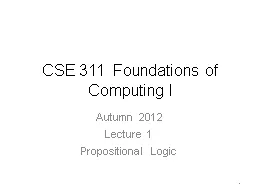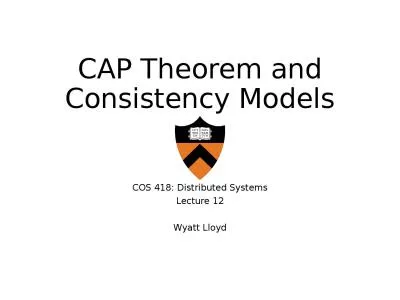PPT-CAP Theorem CSE 40822-Cloud Computing-Fall 2014
Author : SweetMelody | Published Date : 2022-07-28
Prof Dong Wang CAP Theorem Conjectured by Prof Eric Brewer at PODC Principle of Distributed Computing 2000 keynote talk Described the tradeoffs involved in distributed
Presentation Embed Code
Download Presentation
Download Presentation The PPT/PDF document "CAP Theorem CSE 40822-Cloud Computing-Fa..." is the property of its rightful owner. Permission is granted to download and print the materials on this website for personal, non-commercial use only, and to display it on your personal computer provided you do not modify the materials and that you retain all copyright notices contained in the materials. By downloading content from our website, you accept the terms of this agreement.
CAP Theorem CSE 40822-Cloud Computing-Fall 2014: Transcript
Download Rules Of Document
"CAP Theorem CSE 40822-Cloud Computing-Fall 2014"The content belongs to its owner. You may download and print it for personal use, without modification, and keep all copyright notices. By downloading, you agree to these terms.
Related Documents














